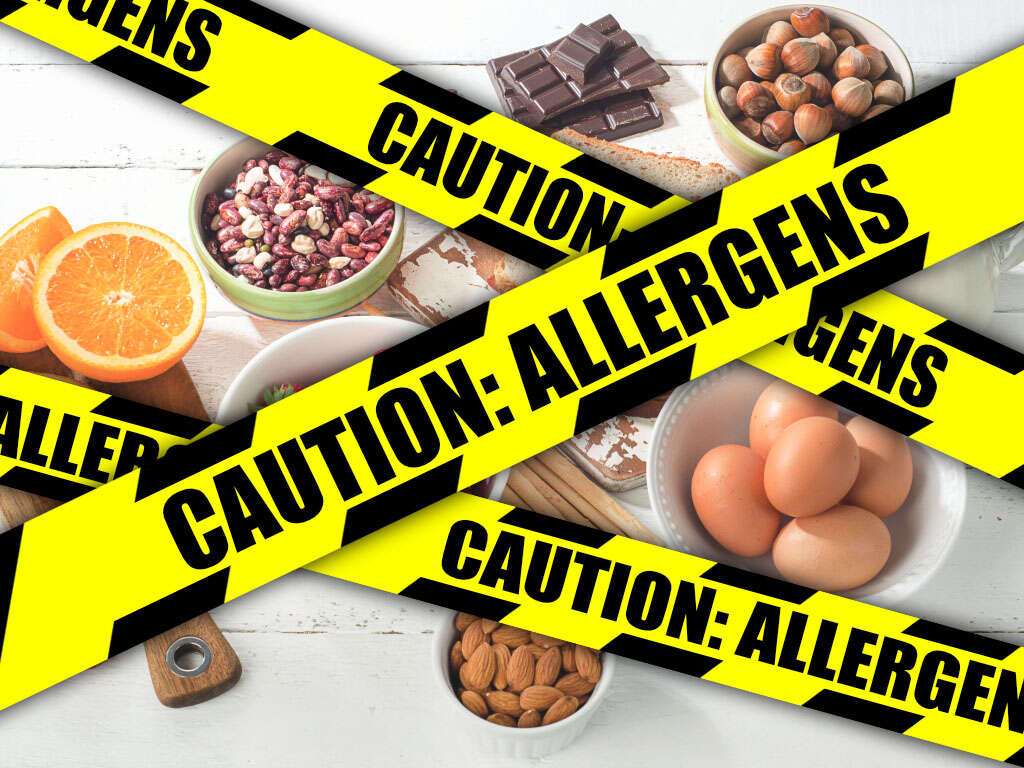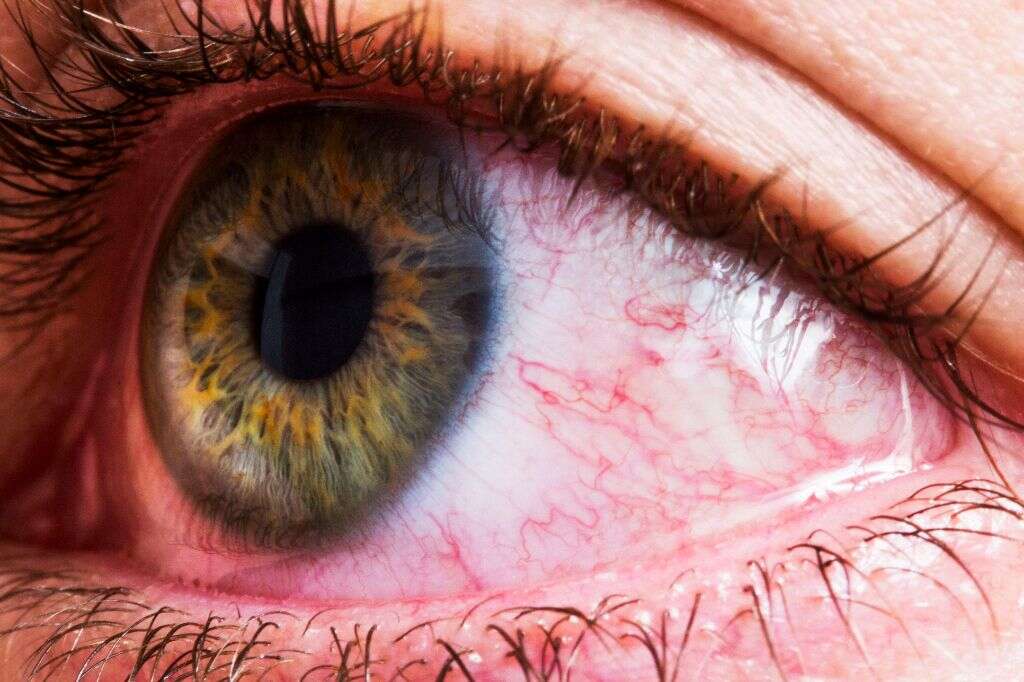10 Food Allergy Symptoms
Food allergies are acute reactions that develop from a misguided immune response towards certain proteins in food. This is a very common condition that affects many people worldwide. The most common foods associated with allergic reactions are milk, eggs, soy, tree nuts, shellfish, and wheat.
Some children affected by food allergies might outgrow them at some point, but this is not always the case. Furthermore, some allergic reactions might be severe enough to cause a person to go into an anaphylactic shock, which is a life-threatening condition that requires immediate medical attention.

1. Difficulty Breathing
Dyspnea is the medical term used to describe sudden shortness of breath. It is characterized by having difficulty breathing which may or may not be associated with a feeling of tightness in the chest. Dyspnea is a non-specific symptom that can be associated with both respiratory and circulatory conditions. It is important to state that exercise-induced dyspnea is usually a normal and transitory state of air hunger that is not directly related to a disease, whereas, resting shortness of breath is usually a sign that something might be wrong.
The allergic reaction caused by food allergies can cause the airways to become tighter than usual, creating resistance to the air that comes into the lungs. If the reaction is severe enough, it can cause the airway to close almost entirely, restricting the flow of air. This is a very serious symptom and requires immediate medical attention.

2. Cough
Coughing is a normal defense mechanism of the body. It is described as a forceful clearing out of the airways in response to certain particles that might cause irritation or obstruction of the respiratory tract. During a respiratory tract infection, coughing is a useful mechanism to clear out the excess mucus being produced. Other conditions as allergies and asthma are also common causes of a cough.
People with food allergies tend to experience many respiratory symptoms. As the immune reaction takes place, the airway tightens and the body starts coughing in an attempt to get rid of the causing agent.

3. Sneezing
Sneezing is a normal defense mechanism of the body. By pushing air rapidly through the nostrils and mouth, the body tries to get rid of any possible substance that might be irritating the nostrils. Usually, we tend to sneeze when exposed to pollen and dust, but sometimes it might be triggered by other particles as well.
Sneezing is a very common symptom associated with an allergic reaction. People with food allergies might start sneezing by only smelling the food or even by being in the same room. This is common for people with peanut allergies but can be seen in other allergies as well. Ingesting the food that causes the allergic reaction can also result in sneezing.

4. Swelling Up
Edema is defined as fluid accumulation that leads to swelling of the affected tissue. It is a non-specific symptom associated with many conditions. Depending on the location and the nature of the edema, it can be a very dangerous sign, like in pulmonary edema, or an annoying symptom like the one seen in venous insufficiency.
Patients with food allergies might experience swelling as a common symptom. Each person might react differently, but the mouth, tongue, and eyelids are commonly affected by this condition. Most patients will experience this symptom shortly after exposure and sometimes, their throat can become swollen causing them to have problems breathing.

5. Nausea
Nausea is commonly defined as the urge to vomit. It can appear suddenly but in some cases, it has an insidious onset. It is a non-specific symptom that can be associated with many conditions, but it can also be triggered by certain events or things in our surroundings.
Gastrointestinal (GI) symptoms are very common for people with food allergies. This is particularly common if the person ingests the allergen, as it goes straight into the GI system. Depending on the amount of food ingested, it can lead to vomiting and some patients might experience abdominal pain as well.

6. Diarrhea
Diarrhea is defined as the passage of 3 or more loose or liquid stools in a single day. This is a non-specific symptom that is associated with many conditions. Depending on the duration of this symptom, it can be classified into acute diarrhea (usually lasts a few days) and chronic diarrhea (over 14 days). Diarrhea can lead to dehydration, and this is especially important in young children and elderly patients.
People with food allergies may experience diarrhea after ingesting the allergen. If treated, this symptom should resolve shortly without any major complications. It is important to stay hydrated to avoid dehydration.

7. Rash
A rash is a disturbance in the normal structure of the skin, usually involving changes in the skin color and texture. It is a non-specific symptom that can be seen in many conditions. Usually, a rash can cause itchiness in the affected area, but this is not always the case.
Patients with food allergies tend to have some sort of skin reaction when exposed to the allergen. Some people are going to experience red spots in their skin that might be quite itchy. Flushing is also a common finding in the early stages of a food-related allergic reaction.

8. Itchiness
Pruritus is the medical term that describes the feeling of irritation and uneasiness that makes you want to scratch the affected area of the skin. It can be caused by many conditions and depending on the source of the problem it can be very annoying especially at night when we try to sleep.
Some people might experience a weird itching in their throats after ingesting an allergen. This is usually one of the first symptoms to appear after exposure. Additionally, some patients that develop a severe rash can experience generalized itchiness in the affected areas of the skin.

9. Red Eyes
The white part of our eyeballs is called the sclera which is covered by a thin transparent layer called the conjunctiva. Many conditions can cause the white part of our eyes to turn red or pinkish. Usually, this happens as a result of dilated blood vessels in the conjunctiva, which can be caused by many conditions including direct trauma to the eye, allergic reactions, and infectious diseases to name a few.
The eyes can also be affected during a food-related allergic reaction. They can become red, swollen, itchy and sometimes they can start to tear up. It is important to remove the causing agent as soon as possible and seek medical treatment to avoid further complications.

10. Wheezing
Wheezing is described as a high-pitch noise associated with the act of breathing. It usually happens during the inhalation phase, but it can be heard at any moment. This symptom signals that the airway is somehow constricted or blocked and the air is struggling to get through. This whistling sound is usually associated with patients with asthma, but it can appear in any medical condition that causes bronchoconstriction.
The respiratory tract is heavily affected by food-related allergic reactions. As the allergen enters the body, the allergic reaction causes the airway to tighten (bronchoconstriction). As a result, the air is going to find more resistance and the whistling sound appears. This symptom shouldn’t be taken lightly, as it can be an early sign that the condition may cause an anaphylactic shock.












